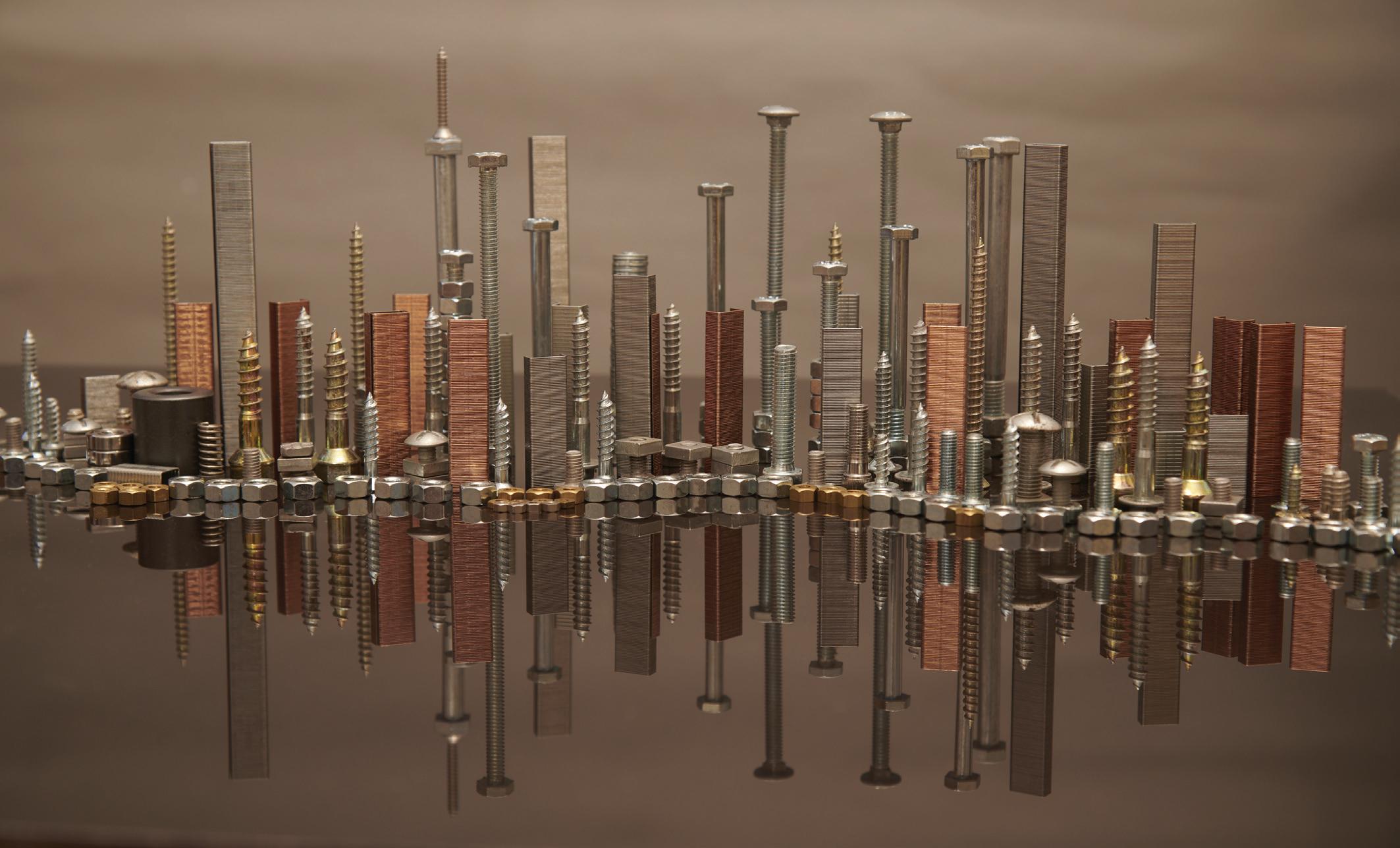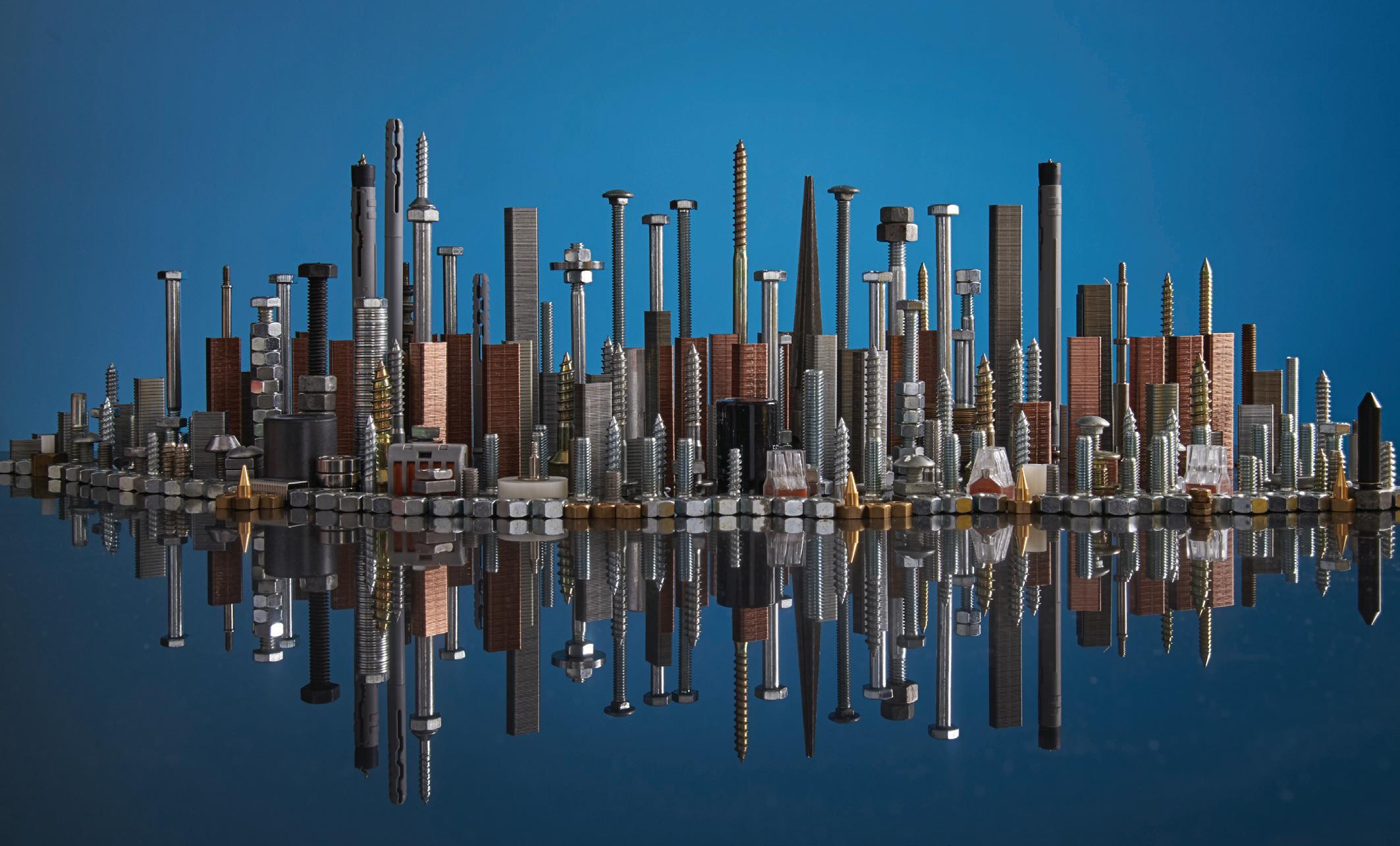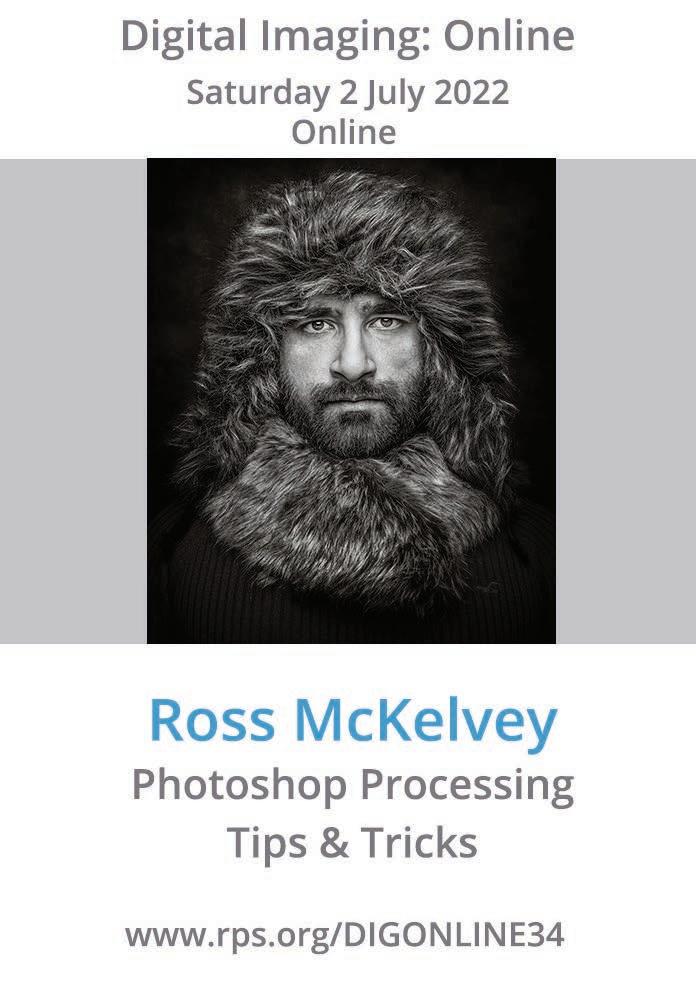
2 minute read
DIGIt Challenge: Hardware city
HARDWARE CITy
EDDIE LORD
After taking on the Chairmanship of Crawley Down Camera Club, I thought it was time to seriously extend my portfolio, and perhaps work towards a distinction.
Being interested in table top photography, I decided to build on an idea I had some years ago, which involved using a large box of old copper coloured staples, recreating the feeling of a simple cityscape. The brief was simple enough: set up the staples in a way to represent a cityscape, and include an appropriate reflection, replicating a city built next to a large body of water. However, it soon became apparent that staples alone did not do justice to the variety of building shapes seen in a modern city. Different shapes were required: solved by raiding the garage for spare parts, and purchasing boxes of cheap hardware. For the reflection, the local tile shop produced a very large glossy black floor tile, making a suitable reflection possible. The next challenge was to build the set and add some lighting, using an old studio flash light and soft box, positioned to give mainly side lighting, representing a low sun in the sky. The background was grey paper which was slightly warped, which I hoped would give some ‘out of focus’ texture to the ‘sky’. This was lit by a standard flashgun and diffuser on the floor, where different coloured gels could be fitted. All the flashes where triggered by a wireless trigger fitted onto the camera hot shoe. Foam board was used as a fill light. The first trial images were taken, and it was obvious that depth of field would become a problem as additional hardware was added to the set. To overcome this, the camera was tethered to my laptop running the Helicon Focus suite to stack the images. Helicon controlled the camera throughout: automatically focusing the camera and taking photos prior to stacking. A short delay was added between shots to allow the flash lights to recycle back to full power. This delay produced unforeseen side effects, as moving about the room whilst the process was under way, allowed for small movements of the tripod, giving slight problems during stacking. Extra weights added to the tripod helped dampen any movement. Close examination of each result meant a continuous shuffling of the hardware to improve the separation between the different elements. BluTac was my initial idea to stop things falling over and creating a cascade of falling dominoes. This proved to be unsatisfactory due to
the fact that the taller / heavier bolts would slowly lean out of vertical. Various push sticks were employed to very carefully slide them around, but at the expense of using more space, exacerbating the depth of field problem. Over 400 images were taken using different light settings, coloured gels, and exposures, but the best images were taken, when a can of compressed smoke was used as part of the background. Helicon was somewhat confused by all the smoke, and it took some time to get this right. Processing was completed in Capture One Pro l

First trial image, no corrections











